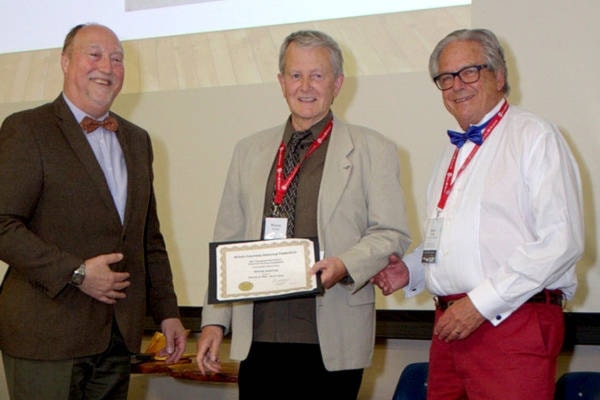John Kinnear
Special to The Free Press
It did not take me long, after coming to Fernie in 1980, to recognize that this remarkable little town has a history as huge and as significant as any place in British Columbia. During the 25 years I spent here, I enthusiastically surfed its historic details and thought I comprehended their scope.
Then I picked up Wayne Norton’s Fernie at War and after absorbing this fascinating First World War era in-depth chronicle, I realized that I had merely skimmed the surface of Fernie’s early years, while Norton had gone deep. Really deep.
I was stunned at the complexity of the events that unfolded here between 1914 and 1919 and how they were so interwoven. Norton is no stranger to immersing himself into and interpreting historic details of a period of time. He has always recognized the importance of mapping and sharing the Fernie area’s history and has done so on two other occasions.
In 1998, he and respected historian Naomi Miller pulled together 23 writers’ offerings into a fascinating collection entitled The Forgotten Side of the Border and followed up with a second volume in 2002 called A World Apart.
Norton’s roots are deeply imbedded in Fernie’s early history. His grandfather came here in 1907 and worked for 44 years in Coal Creek where, in 1910, he married Wayne’s grandmother Ellen. His mother Edith was born in Coal Creek in 1922 and is buried in St. Margarets with the simple epitaph: “A Fernie Girl”.
Fernie at War is undoubtedly the most important historic examination of the Great War years’ impact on this town ever done. Norton’s careful and thorough research is key to helping the average “Fernieite” understand how events unfolded through those divisive six years.
In his book he reveals that Fernie men answered the call to arms by enlisting in no less than eight different contingents between 1914 and 1916. Ninety-three of them never came home and are remembered at the cenotaph.
The town endured all manner of tragedy and conflict as the war raged on. Fernie at War is a swirling mixture of dramatic events, from the ugly period of registration and internment of so-called enemy aliens to constant labour strikes with flooding, heart-breaking mine disasters, prohibition and the Spanish flu thrown in for good measure.
In Norton’s words: “The price paid by the entire community for the entanglement - in blood, bitterness and social division - was exceptionally high.”
Norton, who is always one to keep a perspective on things, states in the book’s introduction the following profound observation: “The prosperous and picturesque Fernie of today may have some trouble recognizing itself in these pages. At the outset, it is perhaps best to remind ourselves that words spoken and actions taken by individuals and groups a century ago are properly judged by the mores and standards of their day – not of ours. If so much described here is found surprising and even shocking, that is simply an indication of how profound and wide-reaching have been the changes wrought by the passage of time.”
Norton was pleased to learn that his book about a community with such a remarkable history was to be recognized by the BC Historical Federation at their annual awards. On May 26, he received the Community History Award in Nakusp at the federation’s Book Awards Gala, part of the BCHF Annual Conference.
Fernie at War is meticulous in its details and presents important perspectives on an era that changed Fernie forever. It is a must-read for all those who want to truly understand the city’s tumultuous early years.
Copies are available at Polar Peek Books and Treasures, at the Fernie Museum, or can be ordered online via publisher Caitlin Press.
John Kinnear was a regular columnist for The Free Press from 1995 to 2005 and won the Sterling Newspaper Ltd. award for best local column in his very first year with the paper.
